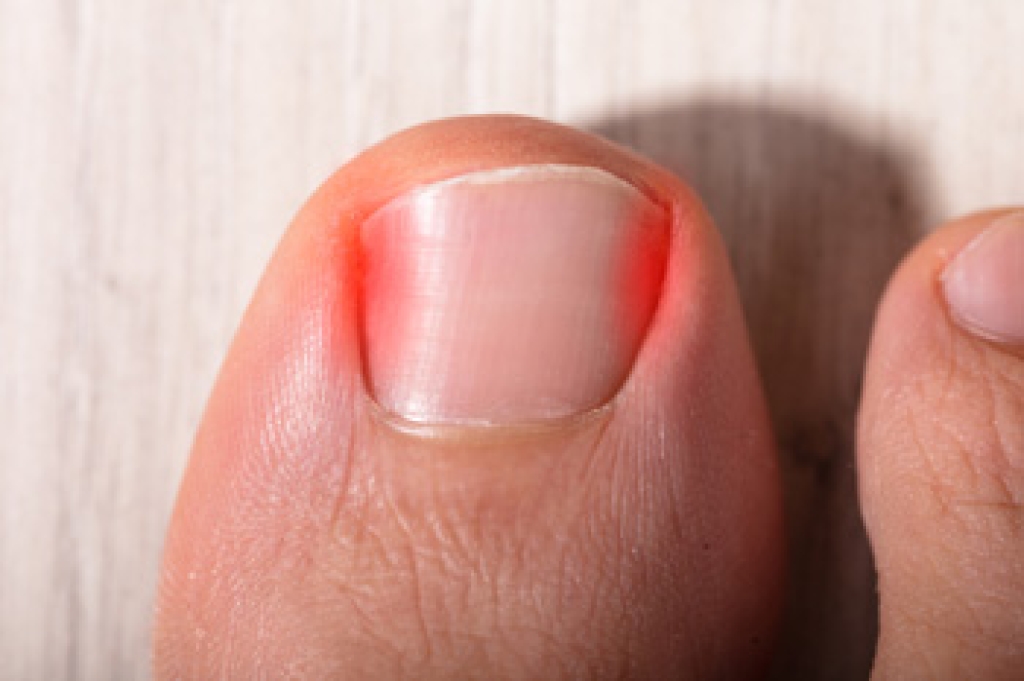
Ingrown toenails occur when the nail, usually of the big toe, grows into the skin surrounding it. Improper toenail care and shoes that don’t give the toe ample room are thought to be the main causes. Other causes include repetitive toe trauma, such as kicking a ball, and an inadvertent injury to the nail, such as stubbing the toe. Ingrown toenails are more common among men than in women, who are more likely to have pedicures. Non-surgical treatment of ingrown toenails helps to reduce the severity and pain. Such treatment includes correcting inappropriate footwear, as well as soaking the toe, and then applying a mid- to high-potency topical steroid. Sometimes, a piece of cotton ball is placed beneath the nail to separate it from the skin and allow the nail to grow out. In other cases, a type of splint is inserted between the nail and the nail bed. If you have trouble with ingrown toenails, it is wise to consult a chiropodist for treatment options.
Ingrown toenails may require medical attention. If you have significant pain or notice signs of infection from an ingrown toenail, please consult with one of our chiropodists from West Toronto Foot & Ankle Clinic Inc. . Our chiropodist will assess your condition and provide you with quality foot and ankle treatment.
What Is an Ingrown Toenail?
An ingrown toenail occurs when the edges of a toenail grow into the surrounding skin. The toenails of the big toe are usually affected, however, an ingrown toenail can happen on any toe. Sometimes, the area can become infected leading to potentially serious complications. The ingrown toenail may be caused by improper trimming of the toenail, wearing ill-fitting shoes, or injury to the nail.
Symptoms
The symptoms of an ingrown toenail include:
- Pain
- Swelling
- Redness
- Warmth
- Pus or drainage from the affected nail or a fever may indicate an infection of the area.
Treatment
Treatment depends on the severity of the ingrown toenail. In less severe cases, home treatment may be adequate. Soaking the affected foot in warm water and gently lifting the nail from the skin with a piece of clean cotton can help. In more severe cases, you may need to use topical or oral antibiotics to treat an infection. Surgical removal of the ingrown toenail may be required if more conservative treatments fail.
Ingrown toenails may be prevented by wearing well-fitted shoes and properly trimming the toenails. Toenails should be trimmed straight across and not too short when using nail clippers.
If you have any questions please feel free to contact our office located in Toronto, ON .
